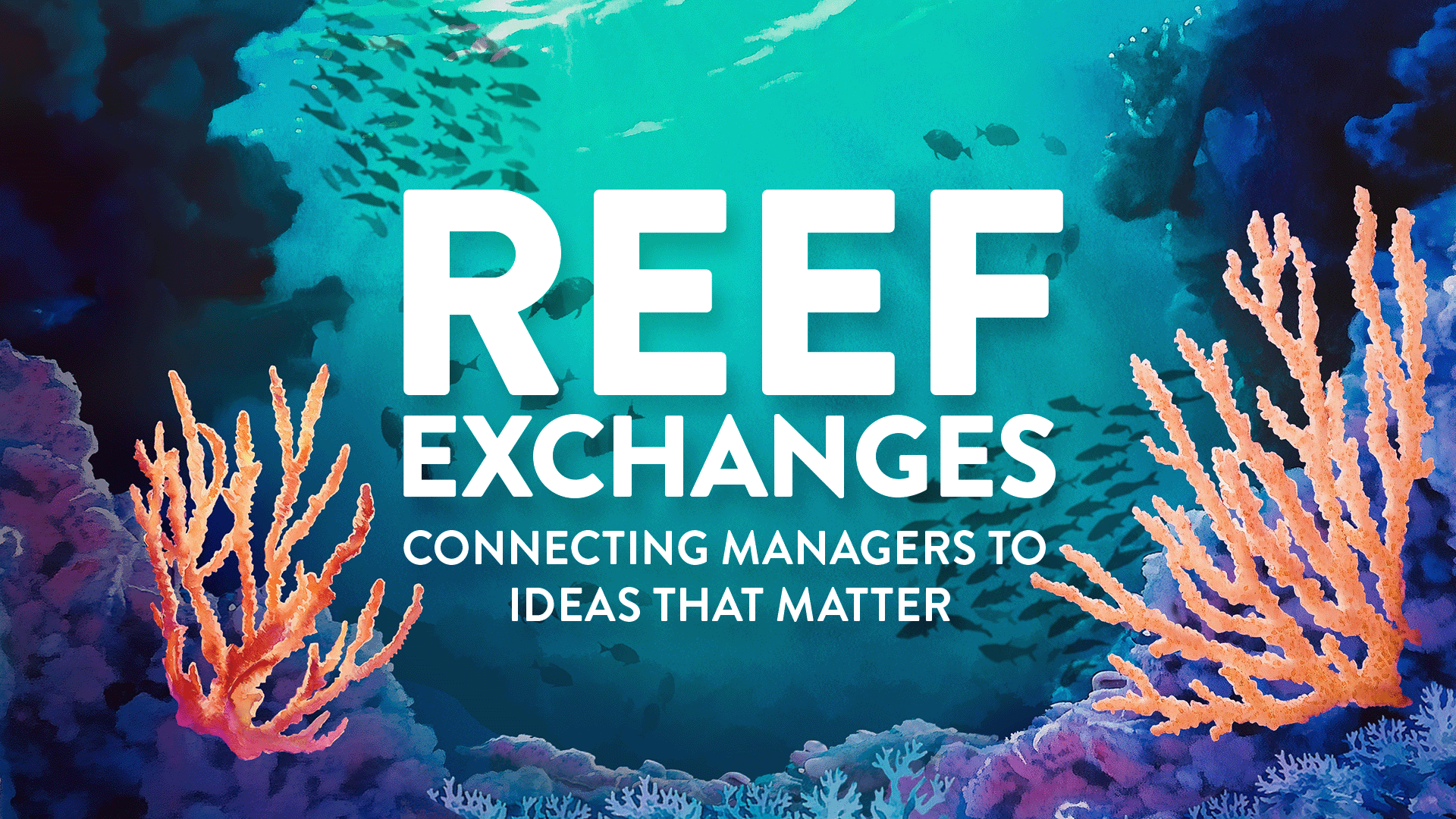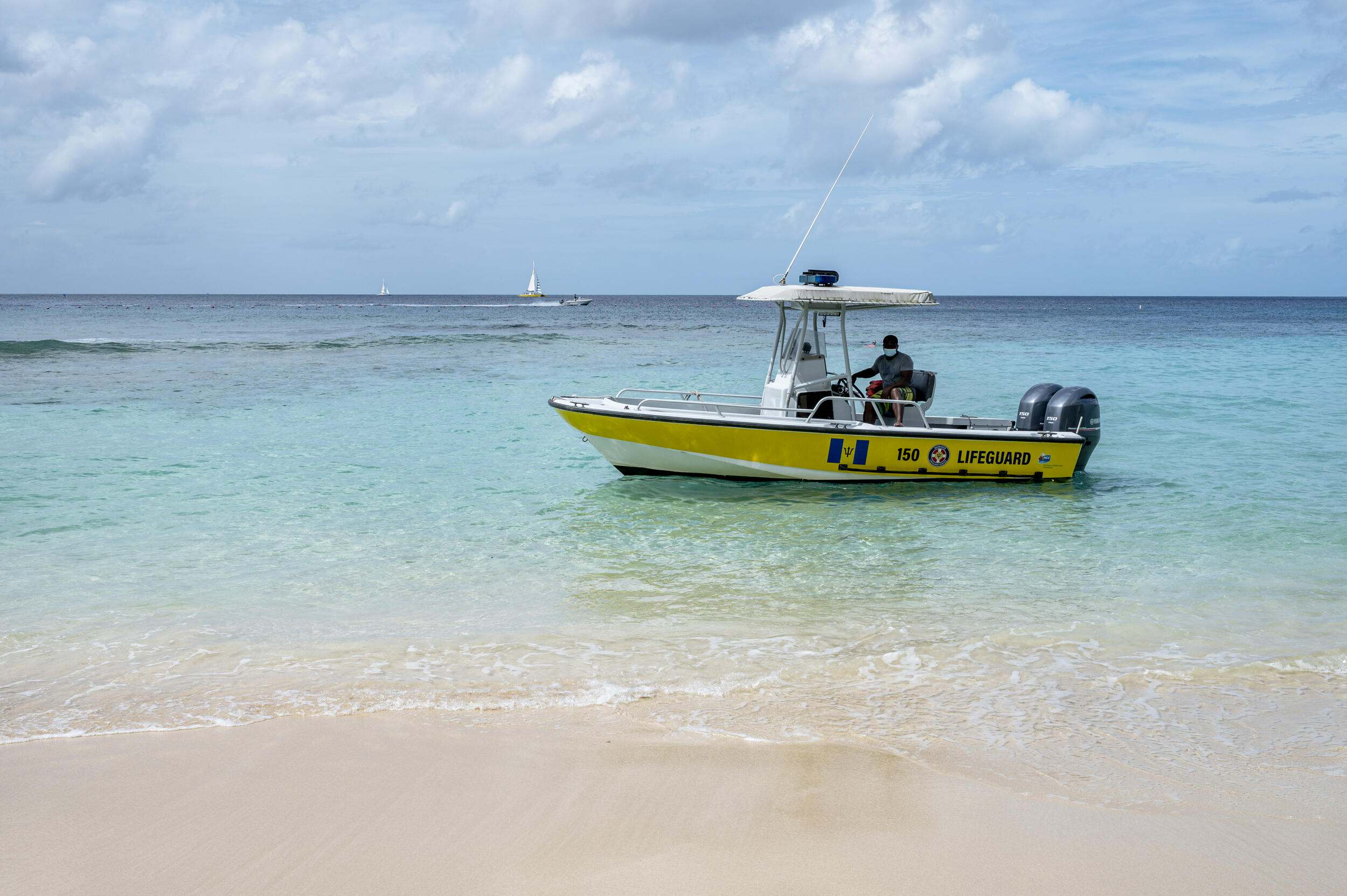Reef Rescuers: Coral Gardening as an MPA Management Tool
Location
Cousin Island Special Reserve, Seychelles
The challenge
In 1998, the mass coral bleaching event, caused by the coupling of El Niño and the Indian Ocean Dipole, severely affected the reefs of the Seychelles Archipelago. The 1998 bleaching catastrophe decreased live coral cover by up to 97% in some areas and caused many reefs around the islands to collapse into rubble (which later became covered with algae). In the following decades, coral recovery has been extremely slow in the inner granitic islands of Seychelles. Despite the existence of numerous no-take marine protected areas (MPAs) – an effective tool to bolster coral reef recovery – it has taken almost 20 years to see coral cover at pre-1998 levels in most areas in the region. A 2011 survey of 21 reefs in the area between Mahé and Praslin revealed coral cover of up to 23% on average and less than 1% of macroalgae. However, nine reefs had shifted toward macroalgae dominated reefs with an average of 42% in macroalgal cover and less than 3% in coral cover. ref In 2016, a second major coral bleaching event occurred in the Indo-Pacific Ocean. The Seychelles has been severely impacted with a more than 30% reduction in coral cover nationally. ref The reef around Cousin Island, including the area previously restored, was impacted resulting in a decrease of coral cover from around 40% to less than 10% (project results).
Coral reef degradation and limited recovery may threaten the economy of Seychelles, including loss of revenue from tourism and recreational activities, negative impacts on fisheries, and exposure of the shoreline to erosion. Thus, restoration of coral reefs needs to be consistent and long-term to guarantee the recovery of ecological functions and benefits.
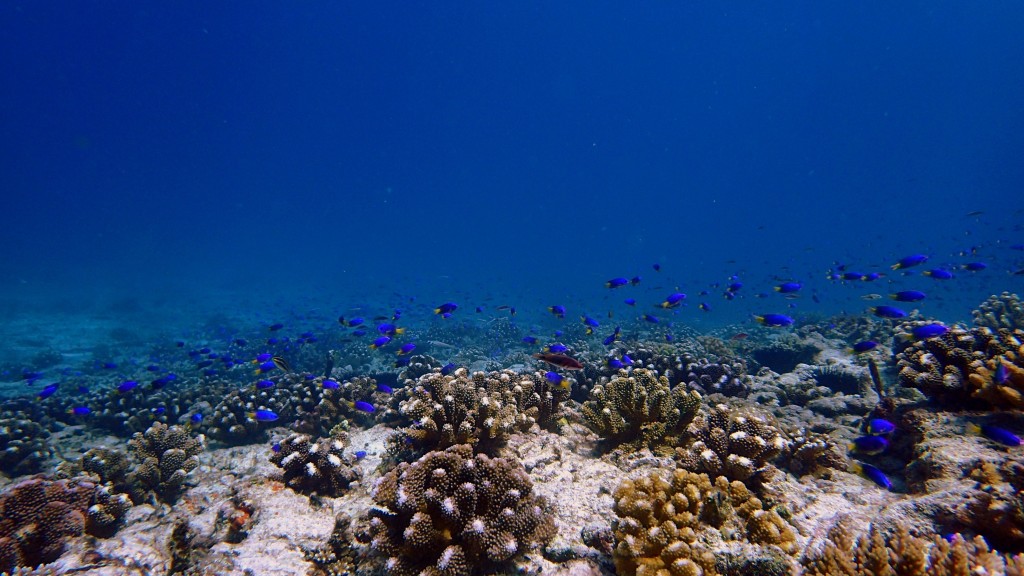
A coral transplantation site at Cousin Island Special Reserve. Photo © Reef Rescuers
Actions taken
The slow post-bleaching recovery motivated active restoration efforts in the inner islands of the Seychelles archipelago to assist in natural recovery. In 2010, Nature Seychelles launched the Reef Rescuers (RR) project on Praslin Island. Financially supported by the United States Agency for International Development (USAID), this climate adaptation coral restoration project seeks to repair coral bleaching damage in selected sites around Cousin Island Special Reserve, a no-take marine reserve. The success of the Reef Rescuers project led to a new phase with the aim of scaling up actions and building on milestones achieved. The next phase will continue using the “reef gardening” concept, testing new methodologies, and set research projects to restore at least 1 hectare of degraded reef and cultivating at least 50,000 corals by 2026.
The new phase of the project is a collaboration between the Seychelles and Mauritius to restore reefs and boost scientific knowledge and regional exchanges. The new phase is supported by a grant from the Adaptation Fund through UNDP and the Government of Seychelles through the project “Restoring Marine Ecosystem Services by Restoring Coral Reefs to Meet a Changing Climate Future.”
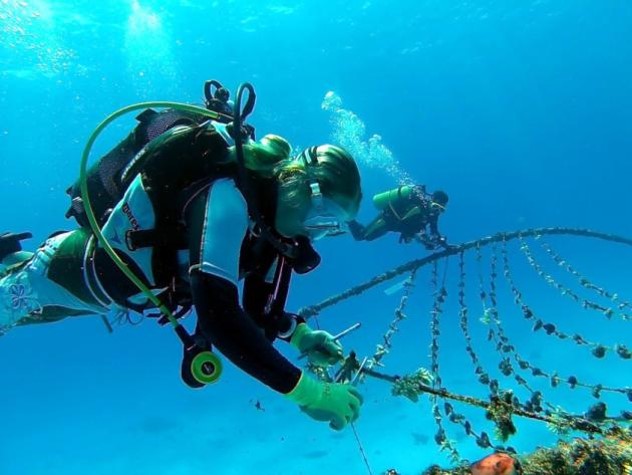
Cleaning the coral nursery. Photo © Reef Rescuers
Starting in 2010, the Reef Rescuers piloted the first-ever large-scale active reef restoration project in the region using ‘coral gardening’, a technique that involves collecting small pieces of healthy coral, raising them in underwater nurseries and then outplanting them to degraded sites. Between 2011 and 2015, forty thousand fragments of coral comprising of a total of 34 species, of which there were 10 different branching/tabular species (Acropora hyacinthus, A. cytherea, A. abrotanoides, A. appressa, Pocillopora damicornis, P. grandis – senior synonym of P. eydouxi, P. meandrina, P. verrucosa, Stylophora pistillata, S. subseriata; species identification after Veron 2000 and nomenclature after the World Register of Marine Species) were raised in 12 underwater nurseries located inside the Cousin Island Special Reserve. A total of 24,431 nursery-grown coral colonies were then outplanted to 5,225 m2 (0.52 ha) of degraded reef within the Special Reserve.
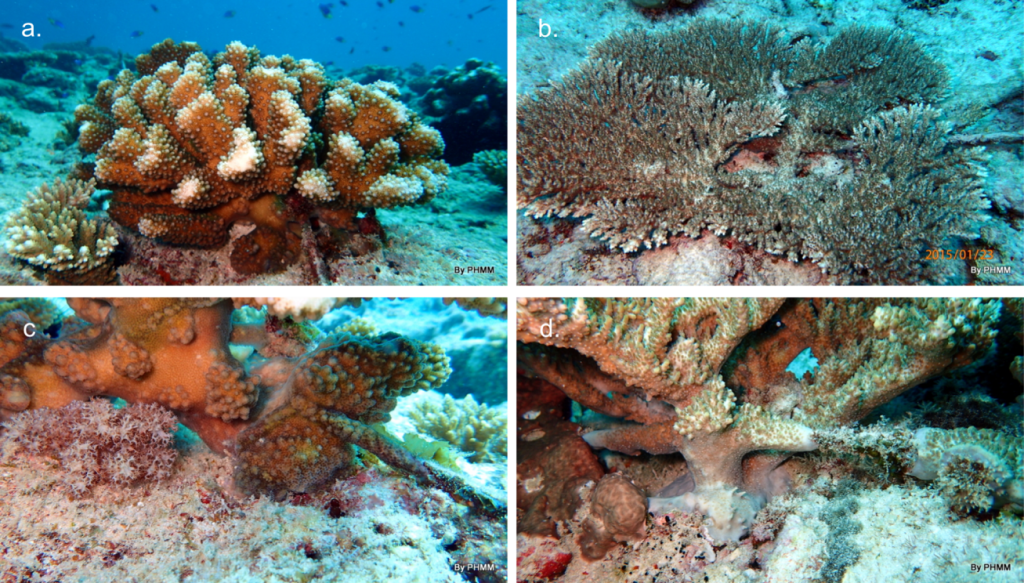
Coral colonies self-attaching. Photos © Reef Rescuers
With the onset of a weak-to-moderately strong El Niño-Southern Oscillation (ENSO) event starting late summer to early fall 2014 and continuing through 2016, we had a unique opportunity to determine the effectiveness of the choice of coral reef species (initially chosen based on survival rates during the last seawater warming anomaly) and the restoration process itself in alleviating the impact of warmer ocean temperatures. We are using standardized protocols to monitor the survival, reproduction, recruitment and bleaching response of donor and transplanted colonies. We continue monitoring at the transplantation site and two control sites, representing a healthy and degraded coral reef. Such monitoring allows us to evaluate the effectiveness of the restoration effort. Additionally, we are assessing the costs of large-scale reef restoration via coral gardening and the life cycle of coral reef restoration technology.
The new phase of the project started in 2020, but the initial operations were delayed due to the pandemic. From 2021 – 2022, the Reef Rescuers team was able to erect 4 mid-water floating rope nurseries stocked with more than 8,000 corals of two genera, Acropora and Pocillopora.
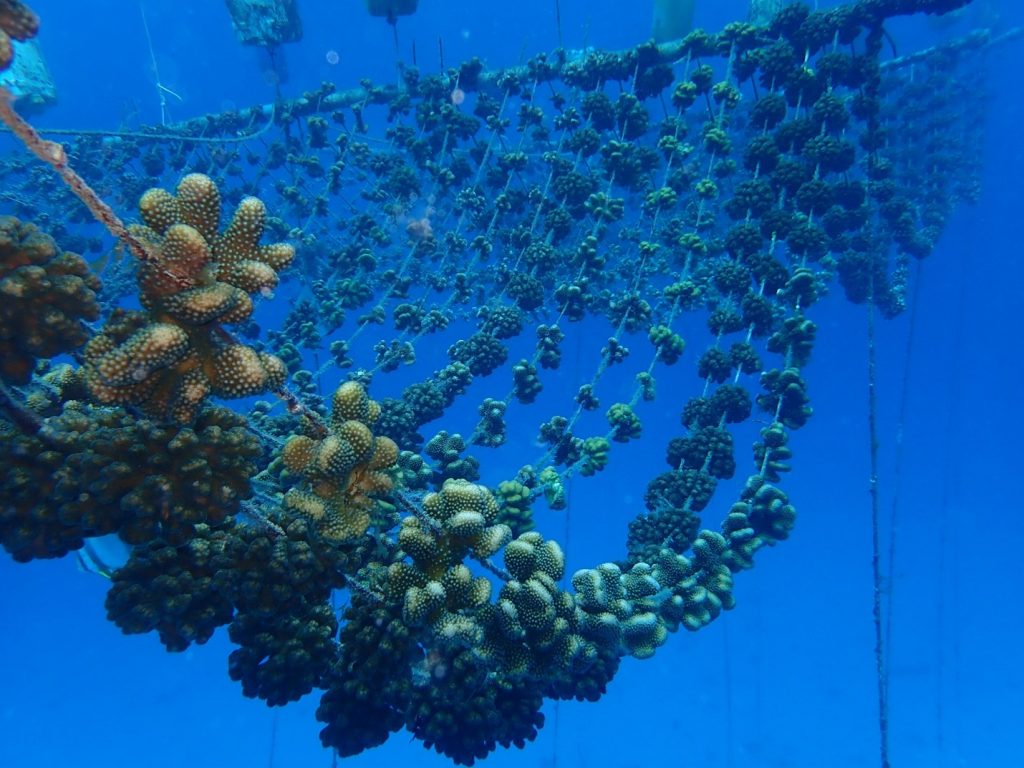
One of the 4 mid-water floating rope nursery stocked with more than 3,000 fragments of corals from the genus Pocillopora. Photo © Reef Rescuers
In early 2022, RR outplanted more than 3,000 corals, belonging to 7 genera (Acropora, Pocillopora, Favites, Porites, Galaxea, Pavona and Stylophora), on the degraded reef around Cousin Island. Two different techniques were used, the cementing of colonies on the reef and the use of metal structures or coral frames. In this timespan, 9 volunteers, both Seychellois and foreigners, have been involved and trained in several aspects of ecology and restoration of coral reefs. Furthermore, educational activities have been carried out involving the local watersports center and primary and secondary schools (both students and teachers) at Praslin; additional training of staff at Raffles Seychelles will start in mid-2022.
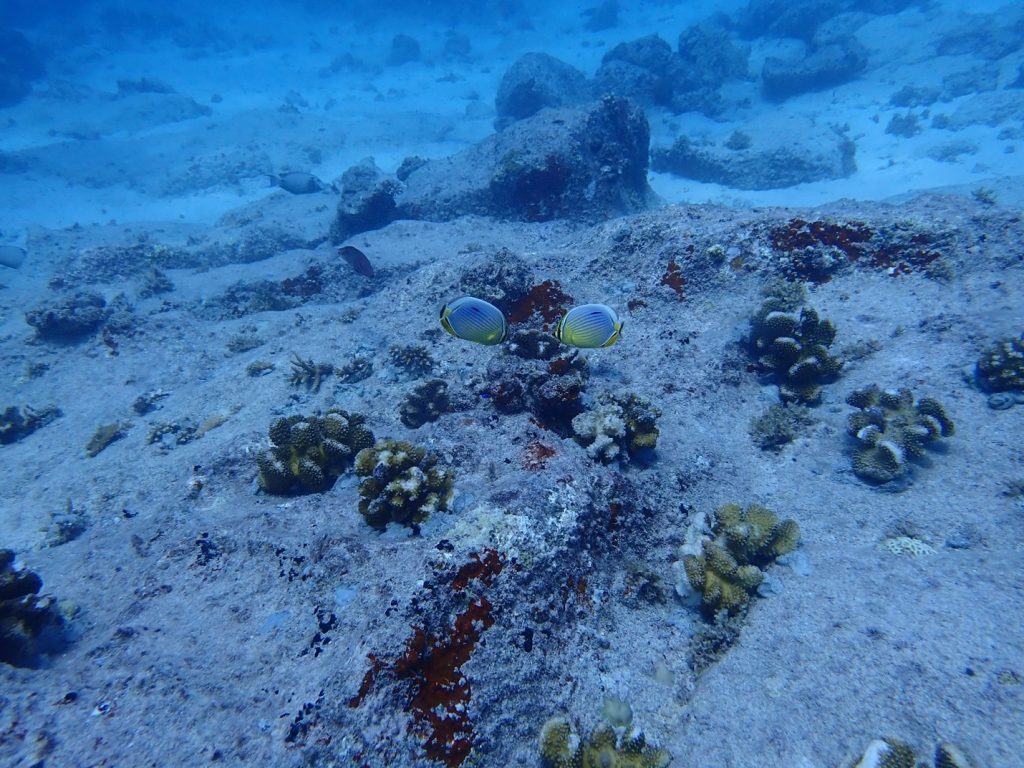
Corals newly transplanted on the degraded reef surrounding Cousin Island. Photo © Reef Rescuers
Research and Future Developments
The RR project aims to improve the scientific knowledge on coral restoration to increase efficiency, success, and awareness. Coral restoration is an active intervention to reduce the damage or loss of corals and associated organisms due to multiple natural and anthropogenic factors (e.g., anthropogenic-driven climate change, outbreaks of coral diseases and predators, and more). A multi-pronged scientific approach is needed to address the improvements and limitations through testing, experimenting, and involving researchers and organizations via solid collaborations.
Currently, the project involves a collaboration with a researcher from the University of Milano-Bicocca (Dr. Luca Fallati) and a student from Heriot-Watt University in Edinburgh (Ms. Charlotte Dale). Dr. Fallati is studying the efficiency of coral restoration by using underwater photogrammetry through the creation of 3D reef models. Ms. Dale as a part of her Master thesis, is researching the efficiency of different stocking methods to improve coral survival, reduce cleaning effort, and improve logistical management of mid-water floating nurseries.
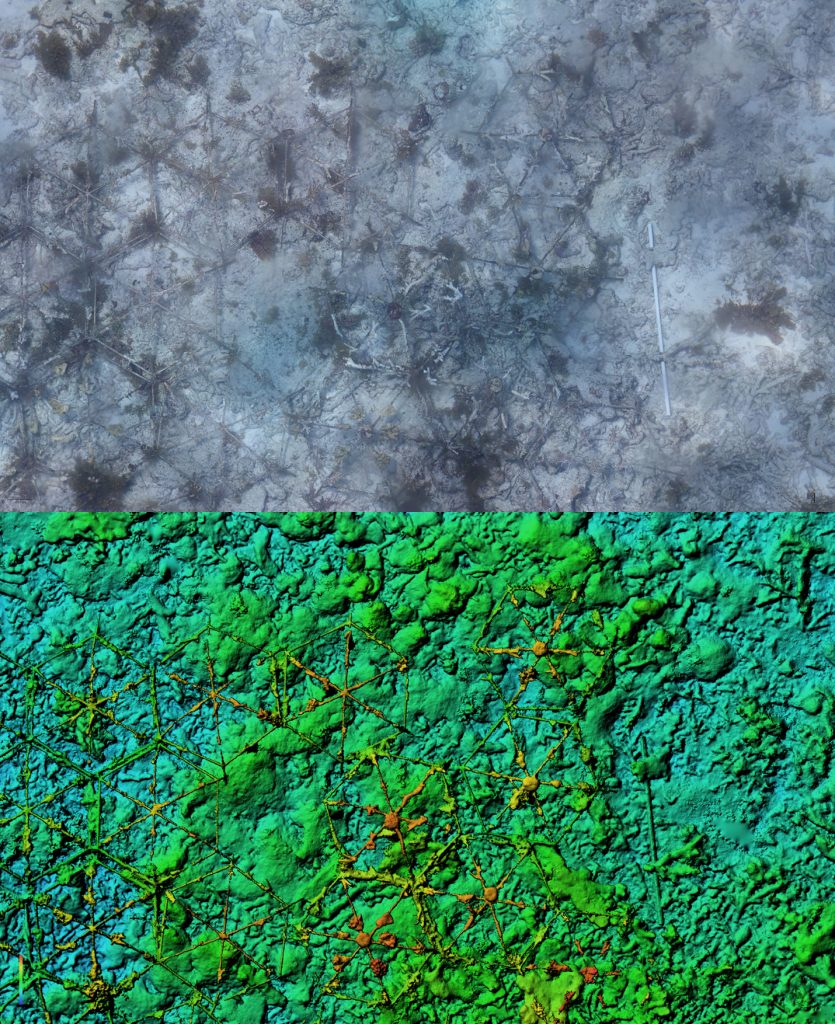
The figure shows part of the area where coral frames have been deployed. The use of 3D models will allow us to assess the success of the restoration effort. Photo © Dr. Luca Fallati
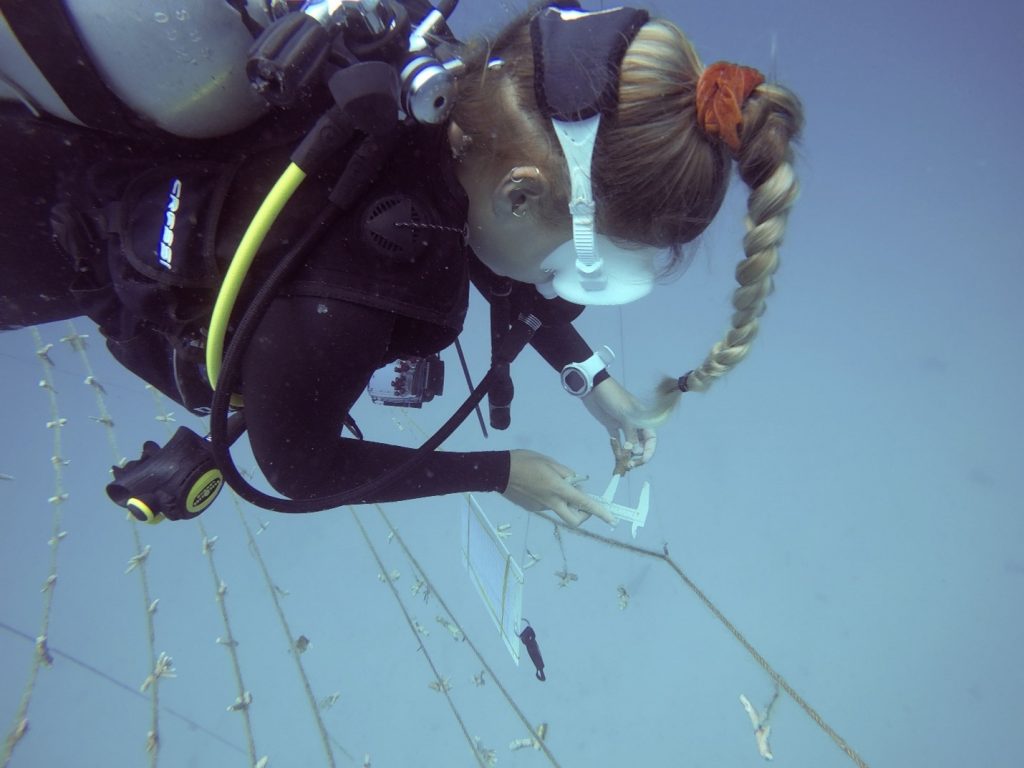
Monitoring is a fundamental part of any project and research experiment. Charlotte is measuring the growth of corals growing on ropes and fishing lines for comparison. Photo © Reef Rescuers
Additionally, the Reef Rescuers are testing the effects of artificial reefs to increase coral cover and reef 3D structure to enhance biodiversity in areas with unstable substrata (e.g., sand and rubble) where outplanting using cement is not suitable. Artificial structures are constructed with iron rebar as spider-shaped coated modules (coral frames) which are deployed on the sea bottom and connected with cable ties to create a net where corals are attached, and space is created for fish and other reef-associated organisms. The future restoration strategy will include the expansion of the frame area and the application of 3D printed reefs in the context of the blue barrier concept.

Coral Frames deployed at around 6 m depth on the degrade reef around Cousin Island. Photo © Reef Rescuers
The current phase of the project includes the establishment of the first large-scale land-based nursery in the Indian Ocean. The facility will be used to produce over 10,000 colonies per year for the restoration of degraded sites. The land-based nursery will grow stress resilient and slow growing coral species that can be reared at a faster rate using brood stock cultivation and micro-fragmentation techniques along with forming a research platform for investigations in coral reef resilience and coral restoration, as well as, for public education and awareness. The installation of the facility is ongoing and it will be fully active in early 2023. To achieve the goal, Dr. David Vaughan, one of the world’s leading coral restoration and coral rearing experts is helping to conceptualize the design of the facility. Additional funding has been awarded to Nature Seychelles to complete the building phase from CMA-CGM, a leading worldwide shipping and logistics group who have developed multiple programs to improve conservation and restoration of marine ecosystems.
How successful has it been?
The long-term “success” is still being monitored but the project has already had positive outcomes. Forty-one practitioners from 11 countries have been exposed to reef restoration techniques by “on the job” work as volunteers up to three months on site, and eight experts have to date been formally trained through a full-time six-week classroom and field-based training program. Before-and-after comparisons in coral cover at the transplanted site showed that the restoration project resulted in a 700% increase in coral cover, from about 2% in 2012 to 16% by the end of 2014. Similarly, the RR have documented a five-fold increase in fish species richness, a three-fold increase in fish density, and a two-fold increase in coral settlement and recruitment at the transplanted site by 2016. We also found that our coral transplants responded better to stressful conditions resulting from increased sea temperatures and a harmful algal bloom. The transplanted corals appear to recover faster and better than corals at other sites. The response of the transplanted reef to thermal stress bleaching is still being monitored. The preliminary analysis of the costs of reef restoration via coral gardening and the life cycle of coral reef restoration technology together with the ecological results so far support the application of large-scale, science-based coral reef restoration projects with long timescales to assist the recovery of damaged reefs.
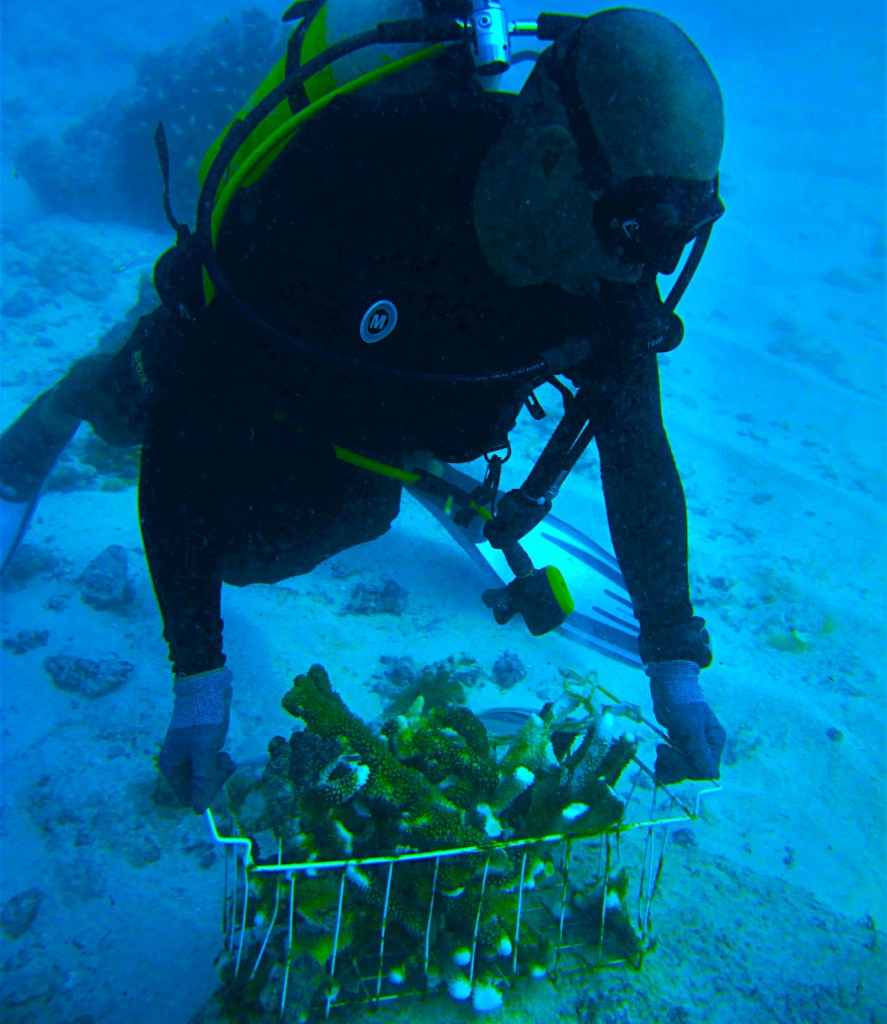
Transporting coral fragments. Photo © Reef Rescuers
Lessons learned and recommendations
A toolkit was developed and published in 2018 to highlight the lessons learned from the project. In summary, we have learned that:
- Survival of coral donor colonies is high.
- Survival of nursery colonies is high for the selected species listed above.
- There is a natural supply of corals (corals of opportunity) to be grown in the nurseries and that eliminate the need to re-fragment nursery-grown or donor colonies.
- Nurseries become floating reef ecosystems.
- Natural cleaning of coral nurseries and coral ropes reduces nursery maintenance and increases transplantation success.
- There is a positive transplantation effect on settlement and recruitment of new corals, fish diversity and density.
- The response of transplanted corals to bleaching causative events needs close monitoring to assess the effects of coral gardening on building bleaching resistance.
- There is citizen science interest internationally in receiving training on coral reef restoration.
- Partnerships with the tourism sector can be developed to establish coral gardens (seascaping) as a guest attraction and as a key part of the industry’s environmental management programs and Corporate Social Responsibility (CSR).
- Large-scale coral reef restoration needs to be considered as a cost-effective tool to include in the MPA manager’s toolbox.
The toolkit is currently under review to include the lessons learned from the new phase. In summary, the up-to-date recommendations are:
- Reducing the size of the mid-floating water rope nurseries (from 1 nursery of 20 x 6m to 2 nurseries of 10 x 6m, respectively length by width) may help in reducing collapses and breakage, keeping the same number of corals reared.
- Testing new methods for rearing corals may help in increasing the coral survival and reducing the effort of cleaning which can be redirected in other operations such as outplanting, stocking, or monitoring.
- Including multiple techniques for the nursery phase may help in diversifying species and genotypes (thus, reducing the nursery bottleneck effect), diversifying the areas where restoration may occur, and scaling-up the project’s goals.
- Testing different outplanting designs and patterns may help in the acceleration of recovery and increase coral survival.
- Expanding collaborations is fundamental for implementing knowledge, resulting in improving restoration effects.
Funding summary
2010 – 2015, funds to support the Reef Rescuers Project have been sourced and provided by USAID
Regional Project donor funded by the Adaptation Fund through UNDP and the Government of Seychelles as the implementing agency from 2020
Partnership Agreement with CMA-CGM (2021)
Memorandum of Understanding with Raffles Seychelles (2021)
Lead organizations
Partners
USAID
Adaptation Fund
UNDP
Government of Seychelles
CMA-CGM
Raffles Seychelles
University of Milano-Bicocca
Heriot-Watt University, Edinburgh
Coastruction
Resources
About the Reef Rescuers project
Transplanted corals attach themselves in pioneering reef restoration project in the Seychelles
Coral Reef Restoration Toolkit – A Field-Oriented Guide Developed in the Seychelles Islands
Rubble raising – Nature Seychelles’ Reef Rescuers use “coral spiders” to assist in reef recovery
Year in review – Cautious optimism as we look back at 2021

